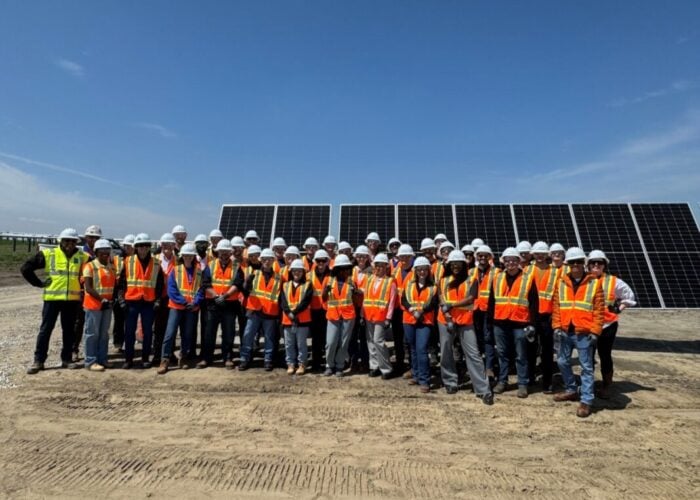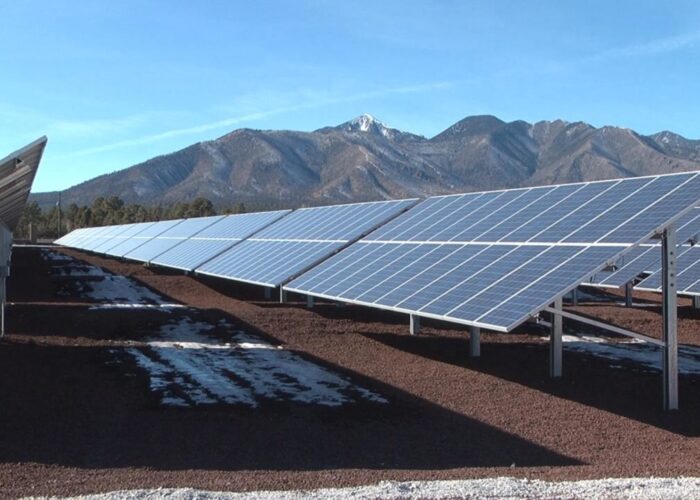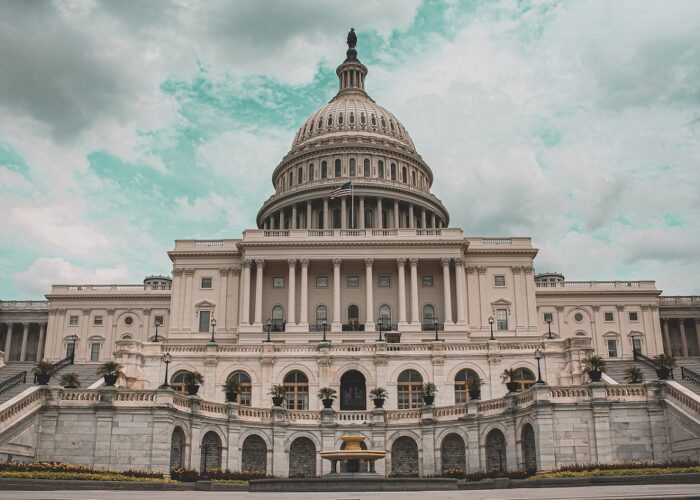
The US state of Illinois is increasing its installed solar capacity. According to the Solar Energy Industries Association (SEIA), 7,688MW of solar capacity will be added until 2028, while the state has only 2,347MW of installed capacity as of the third quarter of 2023.
With more than 71,000 installations across the state, investment in solar reached US$4.2billion as of Q3 2023.
Unlock unlimited access for 12 whole months of distinctive global analysis
Photovoltaics International is now included.
- Regular insight and analysis of the industry’s biggest developments
- In-depth interviews with the industry’s leading figures
- Unlimited digital access to the PV Tech Power journal catalogue
- Unlimited digital access to the Photovoltaics International journal catalogue
- Access to more than 1,000 technical papers
- Discounts on Solar Media’s portfolio of events, in-person and virtual
The US Department of Energy (DOE) announced in October 2023 that Illinois had over 8.6GW of solar, wind, and storage capacity, making it the fifth-largest generator of renewable electricity in the nation. Over 3.7GW of additional planned clean energy capacity is in the pipeline in the state.
Thanks to the projected growth in the state, a total of three trade associations in the US, including ISEA, which comprises two sister organisations: the Illinois Solar Energy & Storage Association and the Illinois Solar Education Association, the Coalition for Community Solar Access (CCSA) and SEIA, established Solar Powers Illinois, hoping to promote the benefits of solar in the state.
“The formation of Solar Powers Illinois stems from the passage of critical legislation: the Climate and Equitable Jobs Act (CEJA) and the federal Inflation Reduction Act (IRA),” says Lesley McCain, executive director of the ISEA.
McCain describes CEJA as “landmark legislation” that has supercharged the Illinois solar industry. “[It] is nationally regarded as the gold standard in clean energy legislation,” she says.
Installed solar capacity growth in Illinois
Illinois passed the CEJA in 2021 and is committed to reaching 50% renewables by 2040 and 100% carbon-free electricity by 2045.
McCain adds that after the passage of CEJA in 2021, 2022 was “one of the biggest years” for solar energy development in Illinois history, and subsequently 2023 was one of the biggest years for residential solar over the years.
The installed solar capacity in Illinois has started to increase significantly since 2020. In 2020, the state installed more than 300MW of solar. A year later, the annual solar installation capacity increased to over 750MW.
Although installations dropped to only over 500MW in 2022, SEIA estimates that Illinois added slightly more than 750MW of solar PV last year.
From 2021-2023, utility scale solar accounted for the majority of solar additions.
Speaking of the growth in recent years, McCain says: “Now is the time to capitalise on the momentum of ongoing solar-related regulatory determinations and legislation to ensure the momentum of the industry and to provide the benefits and value of solar energy broadly across Illinois.”
Policies or legislation that help Illinois develop solar
Illinois has a state-wide goal of achieving 100% clean energy by 2050. Aside from the IRA, the DOE also cites figures from the National Renewable Energy Laboratory (NREL), stating that the costs of solar and wind power are projected to drop by 24% and 34%, respectively, over the next 30 years in Illinois.
In addition to IRA and CEJA, the state also offers some other programmes and tax incentives that make solar more affordable and accessible to residents, businesses and organisations including the Solar for All programme, enabling eligible households to install solar panels on rooftops with no upfront costs and guaranteed savings. Participants only need to pay for half of the value of the bill credits they receive.
The Solar for All programme includes a community solar sub-programme, allowing subscribers of solar projects to receive electricity credits on their electricity bills based on the project’s production.
Residents in Illinois are eligible for the federal Solar Investment Tax Credit, which offers a 30% tax credit for individuals installing solar systems on residential property.
When it comes to building a skilled workforce for the solar industry in Illinois, the CEJA also directs Illinois to establish training hubs and programmes.
“Not only does CEJA foster healthy growth and expansion of the solar industry, but it includes equity-focused provisions to ensure that the benefits of solar energy and the solar industry are shared by all,” McCain says.
Illinois also encourages individuals to opt for solar. McCain says the Illinois Shines programme, which provides incentives for solar projects through the purchase of renewable energy credits from distributed generation and community solar projects, “offers thousands of dollars in cash rebates on solar projects, approximately 30% of a project’s cost”.
Challenges in Illinois and its role in US energy transition
Despite Illinois launching several incentives or programmes to spur the development of the solar industry, some challenges are still ahead.
McCain says that workforce development is one of the challenges that the solar industry in Illinois is facing.
“As the state training hubs have taken longer to establish than anticipated, this slows down the pipeline of skilled and trained workers as well as the process for individuals and contractors to gain the Equity Eligible Persons and Equity Eligible Contractor status,” she explains.
Aside from this, McCain adds that there are still a lot of misconceptions, including misinformation, about land usage and its impact on the environment.
To address misconceptions, Solar Powers Illinois will promote the benefits that the solar industry can bring to society more broadly this year, and ensure residents in the state are aware of the value and benefits of solar energy.
“Now is the time to go solar, and Solar Powers Illinois will continue to help educate both residents and elected officials about the substantial value solar energy provides,” McCain says.
With critical legislation, McCain believes Illinois will continue to be a leader in the US energy transition.
“Illinois’ pro-solar legislation and its booming solar industry will all serve as models for other states to follow and join the solar and clean energy movement,” she concludes.







